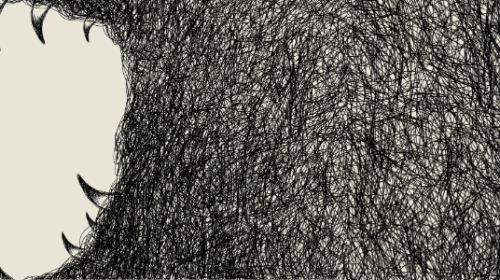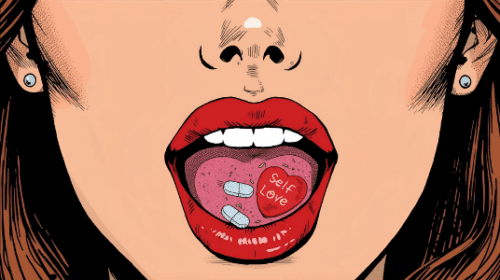You survive—like a phoenix rising from the ashes—but the person you were before is gone. Trying to fit back into your old life now feels impossible.
Some things change you forever.
That’s one of the harder truths about post-traumatic stress disorder, or PTSD. As much as you may wish for life to feel normal again, or to return to old routines and joys, there is an injury to the soul that refuses to be ignored. It draws a line between who you are now and who you used to be; and despite how we imagine PTSD, trauma responses can—and do—happen to anyone.
Post-traumatic stress disorder doesn’t wear a single face. It shows up in boardrooms, firehouses, classrooms, and at family dinners. It affects people from every walk of life: soldiers returning from combat, survivors of abuse, first responders, children, and any person who has lived through something the human mind struggles to process.
And yet, what is PTSD, really? It’s often misunderstood. Many picture it as a combat-related condition—a problem of war—but that’s only one part of the story. While PTSD in the military is both real and widespread, it exists in survivors of domestic violence, natural disaster, chronic neglect, 911 calls, or systemic trauma. The first thing to know about PTSD is that it’s a human condition, not a niche one.
Who experiences PTSD?
Anyone exposed to trauma can develop PTSD; there is no single event that “qualifies”. If something shook your sense of safety and lives in your body in ways you can’t control, that’s significant and deserves your attention.
PTSD affects a wide range of people, including:
- Combat veterans and military personnel
- First responders (police, EMTs, firefighters)
- Survivors of sexual assault, domestic violence, or childhood abuse
- People who’ve lost loved ones suddenly or lived through natural disasters or medical trauma
- Marginalized groups exposed to ongoing community violence or discrimination
- Children and teens with adverse childhood experiences (ACEs)
We don’t know exactly how many people live with PTSD, as many go undiagnosed or aren’t captured in large studies. Rates can also shift during times of war, natural disasters, or widespread trauma.
Here’s what we do know:
- About 6% of U.S. adults will experience PTSD at some point in their lives.
- About 5% have PTSD in any given year, roughly 13 million Americans in 2020.
- Women are more likely to develop PTSD (8% of women vs. 4% of men), in part due to the types of trauma they are more likely to experience.
- Veterans, especially those who served in war zones, face higher rates of PTSD than civilians.
Most people exposed to trauma will not develop PTSD, and many who do can and do recover with treatment.
How PTSD can look and feel
The face of PTSD isn’t always obvious. It’s not always the stereotypical image of someone having flashbacks or waking from nightmares, though those can happen.
PTSD symptoms can also look like:
- Constant vigilance, like you’re waiting for something bad to happen
- Anger or irritability that doesn’t make sense to others
- Emotional numbness or disconnection from people and activities you used to care about
- Substance use that starts as coping and spirals into dependence
- Sleep problems and physical symptoms (chronic pain, headaches, fatigue)
- Panic attacks or extreme anxiety in situations that feel “safe” on the surface
- Avoiding reminders of the trauma, sometimes shutting down whole parts of life
For many, particularly women with PTSD, symptoms can be misdiagnosed as depression or generalized anxiety. For PTSD in the military and first responder communities, symptoms may be downplayed or hidden because of the culture of stoicism and avoidance of “weakness”.
But PTSD isn’t weakness. It’s a natural human response to unnatural experiences.
So, what’s happening in my brain?
When you experience a trauma response—that is, your body’s reaction to a perceived threat—your brain does exactly what it’s wired to do: Protect you. The problem is that trauma rewires some of those protective systems in ways that no longer serve you once the danger has passed.
When you go through a traumatic event, the brain kicks into survival mode and its memory systems are heavily impacted. The part of your brain responsible for threat reaction, the amygdala, goes into overdrive—signaling danger. The hippocampus may store the event in a fragmented, disorganized way that can make memories feel vivid and present even years later. The prefrontal cortex—the part that would normally help assess whether a threat is real—is often overwhelmed and unable to calm the amygdala’s response.
After trauma, this system can get stuck. The brain keeps scanning for danger even when none is present. Triggers that seem unrelated (a sound, a smell, a place) can send the amygdala into high alert, causing panic, flashbacks, or overwhelming anxiety. The body reacts as if the trauma is happening all over again.
Here’s a real world example of how that might look:
Someone is kidnapped and assaulted by a person driving a yellow truck. Later, when they see a yellow truck, their brain recognizes the image and the hippocampus helps link it to the stored memory of the trauma. That memory triggers the amygdala to respond, sounding the alarm: “I know what happens with yellow trucks! Yellow trucks are dangerous, and we need to protect ourselves right now!” All of this happens before the prefrontal cortex has a chance to assess the situation and determine whether a fight-or-flight response is actually needed.
The brain is trying to protect you from being hurt again, but in doing so, it’s making everyday life feel unsafe. And there’s no quality of life in that.
The good news is that the brain (which is an amazingly resilient organ) is also capable of healing. Through trauma-informed therapy and other treatments, it’s possible to help these systems recalibrate so they no longer treat the past as present danger.
Common misconceptions about PTSD
Now that you understand the science behind PTSD responses, let’s clear up some of the myths that have become pervasive in our culture:
Myth: Only veterans get PTSD.
Truth: While PTSD in the military is common, so is PTSD among civilians. Abuse, accidents, and disasters are equally capable of leaving lasting scars.
Myth: Only weak-willed people to get PTSD.
Truth: Will has nothing to do with it. PTSD is about how your brain and body process trauma, not the strength of your character.
Myth: Time heals all wounds.
Truth: Time can dull some things, but untreated PTSD often worsens over time. Without support, people may develop co-occurring issues like substance use, relationship breakdowns, or physical health problems.
Myth: PTSD looks the same for everyone.
Truth: Every person’s trauma and response are unique. Two people can live through the same event and walk away with very different experiences.
The Many Faces of PTSD
One of the most common misconceptions about post-traumatic stress disorder is that it always looks the same. For many, the default image is a combat veteran reliving their war stories. While that version of PTSD is very real, it represents only a fraction of how trauma can shape a person’s life.
PTSD affects a wide range of people: combat veterans and first responders, survivors of sexual assault or domestic violence, individuals who have lost loved ones, those impacted by systemic violence, and children shaped by adversity. Trauma can happen to anyone, and its aftermath is rarely predictable.
Likewise, PTSD symptoms don’t always follow the same script. Some people experience the well-known signs—intrusive memories, nightmares, flashbacks—while others encounter symptoms that are harder to identify as trauma-related. Chronic anger, anxiety, emotional numbness, withdrawal from relationships, and hyper-independence are all common. So is avoidance—of certain places, people, or situations that trigger reminders of the trauma.
Substance use is another frequent response. Many people with PTSD turn to alcohol or drugs as a way to blunt the emotional and physical intensity of their symptoms. Over time, this can create a cycle of avoidance and distress that becomes difficult to break.
PTSD can also affect the body. People often experience chronic pain, fatigue, headaches, and other physical symptoms that don’t resolve through traditional medical treatment alone. The body stores trauma in ways that modern medicine is still working to fully understand.
Because PTSD can take so many forms, it is often overlooked or misdiagnosed. Symptoms don’t always fit the common narrative, and many people spend years trying to make sense of what they’re feeling or why their body keeps reacting the way it does. Recognizing these patterns for what they are is often the first step toward getting help that addresses the full scope of what trauma can leave behind.
Barriers to Care
Even when people recognize they’re struggling, getting help isn’t always easy.
Some of the biggest barriers include:
- Stigma and shame. Fear of judgment from family, coworkers, or peers.
- Cultural pressure. In many male-dominated professions, such as the military or first responder communities, vulnerability is discouraged.
- Lack of understanding. Many people don’t realize that PTSD symptoms can come from trauma outside of combat or that effective treatment options exist.
- Fear of consequences. In professional settings, seeking help can feel risky—people may worry it will harm their career or relationships.
- Limited access to care. For many, treatment isn’t an option because of time constraints, lack of insurance, or the cost of therapy and medication.
These barriers are real, and they can keep people stuck for years, but they’re also breakable. One conversation, one supportive peer, or one good clinician can begin to open a new path forward.
Recovery Is Possible
Post-traumatic stress disorder leaves lasting marks, but with the right support, those patterns can begin to shift. Treatment helps people build the skills to navigate life in the present, without being controlled by what came before.
Effective care includes:
- Trauma-informed therapy (CBT, EMDR, DBT)
- Peer support groups with others who understand the experience
- Medication to support emotional stability and healing
- Addressing co-occurring substance use
- Building safe, supportive relationships and community
Recovery Unplugged offers both in-person and online care for PTSD, designed to meet people where they are. We’re also in network with all major insurance carriers to help make treatment more accessible.
Healing looks different for everyone. For some, it means reconnecting with loved ones. For others, it means returning to meaningful work, rediscovering hobbies, or simply finding steadier ground day-to-day.
PTSD wears many faces, and can affect anyone. And while it may change the way you see the world, it doesn’t have to define your future.
If you or someone you love is living with PTSD, don’t wait. Healing is possible, and no one should have to face recovery alone.

























